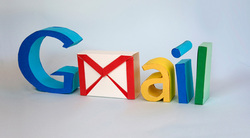
THEY SHOULD BE PAYING US
It didn’t take long for Douglas to realize that Larry and Sergey wanted Google ideally to churn out perfect products while incurring no expense. “That was impossible, of course, but it didn’t stop us from trying,” he writes.
Douglas said he learned that for the founders, the starting point for any negotiation would be the position, “they should pay us”. To the founders, winning a deep discount wasn’t a victory, wrote Douglas. “It was an admission of a failure to get something for free.”
Another core value at Google was to ‘never pay retail’. In the early months of 2000, this was thoroughly tested when an expanding Google wanted more space and Silicon Valley had nothing to offer at less than $8 per square foot. Despite his protestations, Google’s official office hunter George Salah was forced to put in a lowball offer of $6.45 per square foot by Larry and Sergey. The landlord screamed at George’s broker and raised the price to $8.25 per square feet, notes Edwards. As luck would have it for the Google founders, two weeks later the dotcom fever broke and the real estate market collapsed. Salah “sublet space in that same building for $3.5 per square foot, and a year later he leased a completely furnished building nearby for 45 cents a square foot”, writes Edwards. So the Google core value, after all, was based on sound logic.
GOOGLE’S GREATEST CORPORATE EXPENSE
At an all-hands meet one Friday, Sergey popped the question, “Do you know what’s our greatest corporate expense?”
Douglas remembers that everyone wanted to answer that one. Answers came in thick and fast like ‘health insurance’, ‘salaries’, ‘servers’, ‘electricity’, and even ‘Charlie’s grocery bills’. Sergey wasn’t impressed. “No,” he said solemnly, shaking his head, “opportunity cost.” He explained that products the company wasn’t launching and deals they weren’t doing threatened its economic stability more than any single line item in the budget.
(To be continued. Vignettes taken from the book I’m Feeling Lucky by Douglas Edwards. The first, second and third parts of this series can be accessed by clicking on the links)


 RSS Feed
RSS Feed
